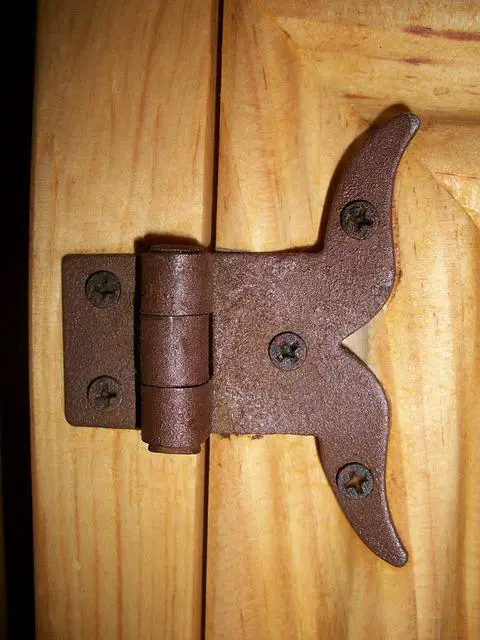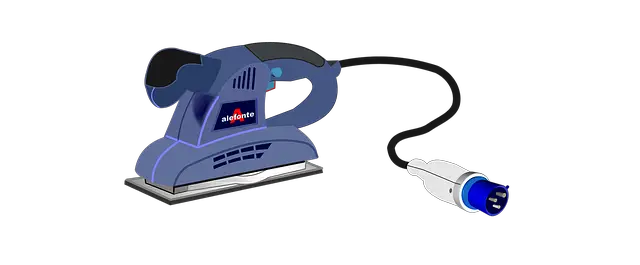Cabinets with a luxurious-looking finish will require you to have a good sander. You will have uneven texture and finish without one. Moreover, paint jobs can look sloppy and uneven without a sander. Sanders can make old cabinets look new!
Also Read: Best Sander for Body Work
Types of Sander for Cabinets
Here are some of the top sanders in the market:
Black Decker Mouse Sander

This mouse sander has the strength that most people seek from a handheld sander, but it also includes a curved end that can restore shabby angles and precision work. Aside from the conventional functions, it incorporates a handy dust collecting system that captures harmful particles and maintains a better working environment.
Key Specifications
- Price: $43.00
- Included grit type: Coarse
- Type: Detail
- Power: 1.2 A, corded
Pros:
- Finger attachment for reaching tighter spaces
- Dust collection system
Cons:
- On the costlier side
Makita BO4556 2 Amp Finishing Sander

This Makita sander’s huge swath of sandpaper is ideal for polishing cabinets, and its rubberized handle makes it easy to hold for long periods. In addition, the finishing sander excels at addressing angles and getting into tight 90-degree corners because of its rectangular design. It also comes with a convenient dust collection system.
Key Specifications
- Price: $44.00
- Included grit type: Medium
- Type: Finishing
- Power: 120 V / 2 A, corded
Pros:
- Great at tackling corners
- Comes with a dust collection system
Cons:
- Might malfunction sometimes
Bosch ROS20VSC Palm Sander

Even though this 3.5-pound random orbital sander has a lot of useful functions and is just the ideal size for a cabinet project, it has a lot of them. The handle of Bosch’s model makes it comfortable to hold, while the grips on the underside keep the sanding discs from coming loose.
Key Specifications
- Price: $77
- Included grit type: Coarse
- Type: Palm/random orbital sander
- Power: 2.5 A
Pros:
- Microfiltration technology
- Variable speed control
Cons:
- On the pricier side
Skil corded detail sander

Because of its mouse shape, this little sander from Skil will enable smoothly gliding across level surfaces and into tight crevices and nooks. While it isn’t the most advanced sander, this low-cost choice is worth considering when it comes to sanding kitchen cabinets.
Key Specifications
- Price: $30.00
- Included grit type: Medium
- Type: Detail/mouse
- Power: 1 A
Pros:
- Cheaper option
- Easy sanding sheet change
- Easy operation buttons
Cons:
- Cannot apply too much pressure, or it will break
Ryobi DS1200 Corded Detail Sander

Getting into all of the nooks and crannies and doing detailed work on cabinet doors is a time-consuming task in and of itself. As a result, an oddly-shaped sander, such as this Ryobi DS1200 model, is ideal for achieving a smooth surface without manually driving around the disc into angles and corners. In addition, the triangle pads are handy for cabinet pieces such as doors, where sanding might be problematic depending on the design.
Key Specifications
- Price: $44.97
- Included grit type: Assortment
- Type: Detail
- Power: 0.4 A
Pros:
- Gets into the cracks and crevices
- Triangular pads are perfect for corners that are at a 90 degree
Cons:
- Pads are not universal, and new pads are expensive
- You may have to apply too much pressure
TECCPO Mouse Detail Sander

Customers may easily start sanding using TECCPO’s detail sander, which comes with 12 different sanding papers. Like most mouse sanders, the nose aids in getting into regions where a random orbital sander would fail. A copper motor fan keeps the dust to a minimum, and the sheets provide both a fine and coarse finish.
Key Specifications
- Price: $34.99
- Included grit type: Coarse, fine
- Type: Mouse/detail
- Power: 1.1 A
Pros:
- Great performance at its price
- Dust collection system
- Ergonomic design
Cons:
- Sometimes stops working after a few days
DeWALT Random Orbit Sander

When it comes to holding sandpaper and discs down, hook and loop connectors are an excellent alternative to clamps. Another device with a similar feature is the DeWALT sander. Thanks to the three amps’ ability to operate 8,000–12,000 OPM, fast sanding is also possible.
Key Specifications
- Price: $89.00
- Grit type: Coarse
- Type: Random orbital sander
- Power: 3 A
Pros:
- Universal connector can connect to other dust ports
- Ergonomic design
Cons:
- Costly
- Sometimes the tool comes with a European plug
Mirka Direct Electric Random Orbital Sander

If price isn’t an issue, but the quality is, Mirka’s brushless sander is difficult to beat. The random orbital sander is the smallest in the DEROS range, but because of its brushless motor, it can still produce excellent results and work for extended periods. In addition, because of its compact, ergonomic size and no vibrations technology, one reported relief from carpal tunnel, while others reported no pain when standing for hours.
Key Specifications
- Price: $569.00
- Included grit type: Various
- Type: Random orbital sander
- Power: 120 V
Pros:
- Variable speed
- Silent operation
Cons:
- Extremely costly
What is the fastest way to sand cabinets?
There are many ways you can sand your cabinets. Here is the fastest way to do so:
Remove the hinges from the cabinet doors and unscrew them.

Leave the hinges on the cabinet boxes if you’re simply planning to refinish the doors. Remove the cabinet drawers and empty them as well, along with knobs and pulls. To make this go faster, use an electric drill or a screwdriver.
Also Read: Should you Line your Kitchen Cabinets, Drawers and Shelves?
Make sure the cabinet doors are clean.
Use a powerful degreasing cleaner, such as trisodium phosphate, and thoroughly scrub the cabinets (TSP). Remove filth from grooves and corners with a kitchen scrub sponge and a toothbrush. Remove all grease and grime; the new finish will not cling well to the cabinet doors unless the surface is spotless, damaging your refinishing operation. Allow them to dry after rinsing them clean.
Fill in any cracks or holes.
Use a carpenter’s wood putty in a color that matches the original wood to fill holes, cracks, and dents in cabinet doors and drawers. Allow the putty to cure before continuing.
Sand the doors and drawers
For the initial sanding of the cabinet doors, use an electric sander and 100-grit sandpaper. Then, sandpaper or a sanding sponge can sand the edges and grooves. Finish by hand sanding along the wood grain with 150- or 180-grit sandpaper or a medium-fine sanding sponge.
Also Read: What not to use magic eraser on
Get rid of the dust.
Using a vacuum attachment or a “tack” rag, remove the sanding dust from the cabinet doors. Before repainting the cabinet doors, make sure all dust has been removed.
Apply the stain to the wood.
Apply the stain liberally to the top of the cabinets with a fine-bristle brush. Wait for 5 to 10 minutes before wiping it clean with a lint-free towel. Allow enough time for the stain to dry.
Apply the varnish to the surface.
Allow a day for the stain to set before applying the varnish. Wait around 8 hours before flipping the doors and staining the back. Use a sprayer or a high-quality brush to apply at least two appropriate varnish or polyurethane coats. For a smooth, long-lasting finish, carefully sand the cabinets between layers.
Buying Guide: What to look for in a sander for a cabinet?

Using the appropriate sander, you can avoid swirl marks, an uneven finish, and divots. However, before we look at the best possibilities, let’s look at the many types of cabinet sanders on the market.
Cabinet Sanders Come in a Variety of Styles
There are many different types of sanding equipment available, from simple orbital and mouse options to those with dust collecting bags and built-in workspaces, such as a belt sander. However, a few sanders will be the most popular when it comes to cabinet sanding.
Orbital Sanders
As their name implies, Orbital sanders rotate circularly and have spherical discs inserted to sand an object. Unlike other finishing and detail sanders, they have a spherical shape.
Random Orbital Sanders
Like an orbital sander, a random orbital sander spins round discs in circles. These, however, travel randomly, unlike standard orbital sanders.
Palm Sanders
Random orbital sanders and palm sanders are frequently interchanged and are sometimes the same sander. Palm sanders are, in essence, a smaller, more compact version of the instrument that, in theory, fits easily in the user’s palm.
Finishing Sanders
Look no farther than finishing sanders for a flawless finish. They have similar capabilities to other sanders, but they’re better suited to generating a precise finish and polishing the surface of cabinets. Unlike their circular counterparts, these normally have a rectangular surface.
Mouse or Detail Sanders
These sanders feature a tapering snout and a spherical back, similar to a cartoon mouse. As a result, mouse or detail variants can get into tight spots and strange corners that their larger or round siblings can’t.
Also Read: How to remove scratches from stainless steel sink
FAQ’s
People use the equipment for various tasks involving wood refinishing. Still, it’s safe to say that random orbital sanders are most commonly used to prepare wood cabinets and furniture for staining or painting.
It all starts with the preparation! The preparation is equally as vital as the painting process itself, if not more so. You are setting yourself up for failure if you skip the preliminary work into painting your kitchen cabinets.
Most cabinet refinishing operations take 3 to 5 days to complete, providing no issues emerge, such as plumbing or electrical work requirement while the cabinets are removed.
Dust particles can be a huge setback when getting a smooth finish on your wooden surface, so staining should be done in a dust-free atmosphere. This post will show you how to deal with dusty conditions using basic ways.
Make sure you’re working in a well-ventilated location and put on your coveralls, mask, and goggles as needed. Sanding is a messy process. Cleaning sanding dust from the wood is more complex, so you should put on your protection gear.
Wrapping Up
A good sander is vital for constructing satisfying cabinets, whether you’re an expert cabinetmaker, a family handyman, or a DIY enthusiast. Whether Bosch’s convenient palm sander or a more expensive but technologically advanced sander like Mirka’s brushless option, these sanding machines should be in any arsenal when it comes to sanding cabinets to a professional level.